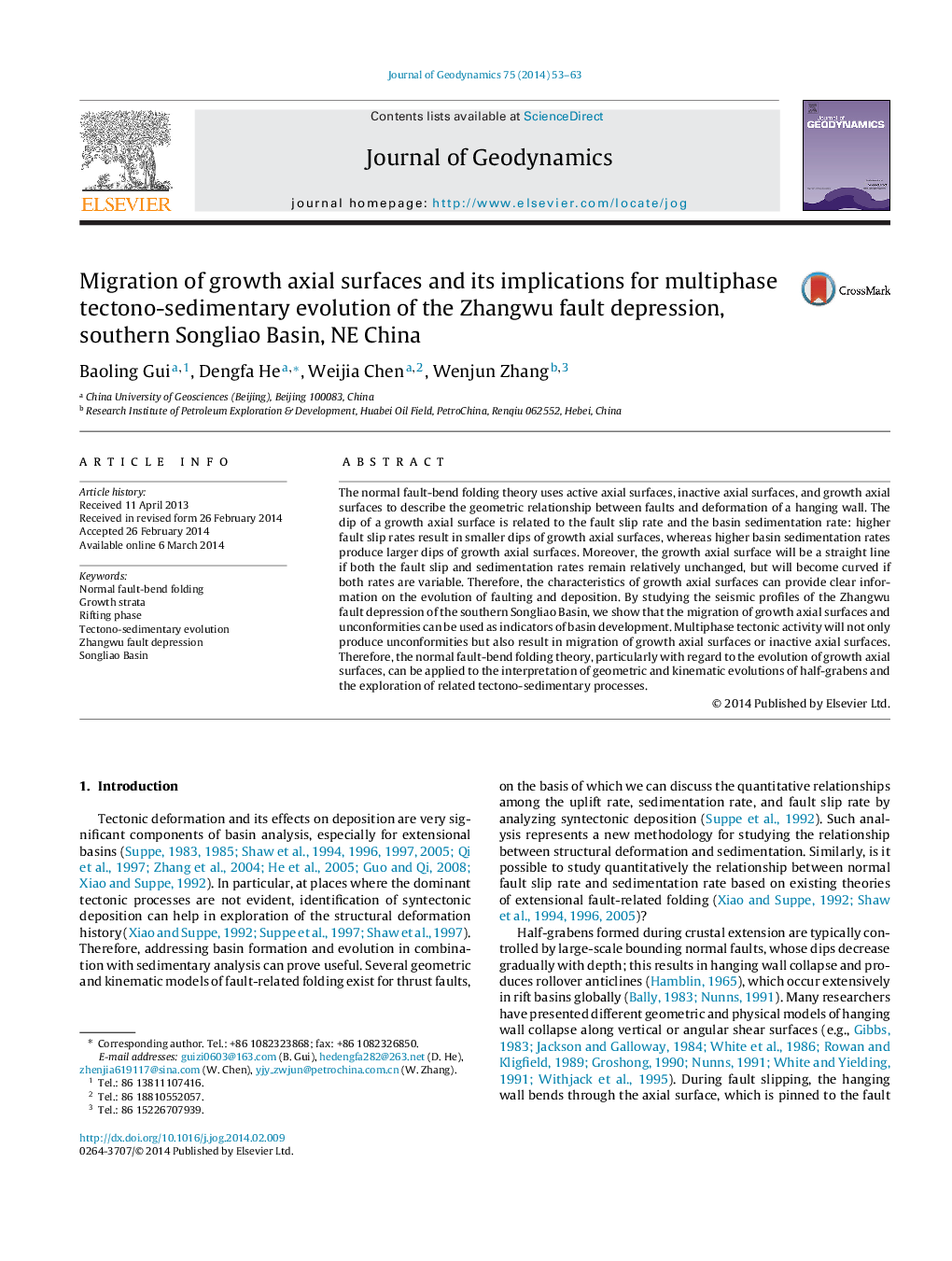| Article ID | Journal | Published Year | Pages | File Type |
|---|---|---|---|---|
| 4688166 | Journal of Geodynamics | 2014 | 11 Pages |
•Built two geometric and kinematic models of multi-stage tectono-sedimentary evolution.•Gave a new quantitative method to study normal fault slip rate and sedimentation rate.•Applied the new models to interpret the seismic profiles of Zhangwu fault depression.
The normal fault-bend folding theory uses active axial surfaces, inactive axial surfaces, and growth axial surfaces to describe the geometric relationship between faults and deformation of a hanging wall. The dip of a growth axial surface is related to the fault slip rate and the basin sedimentation rate: higher fault slip rates result in smaller dips of growth axial surfaces, whereas higher basin sedimentation rates produce larger dips of growth axial surfaces. Moreover, the growth axial surface will be a straight line if both the fault slip and sedimentation rates remain relatively unchanged, but will become curved if both rates are variable. Therefore, the characteristics of growth axial surfaces can provide clear information on the evolution of faulting and deposition. By studying the seismic profiles of the Zhangwu fault depression of the southern Songliao Basin, we show that the migration of growth axial surfaces and unconformities can be used as indicators of basin development. Multiphase tectonic activity will not only produce unconformities but also result in migration of growth axial surfaces or inactive axial surfaces. Therefore, the normal fault-bend folding theory, particularly with regard to the evolution of growth axial surfaces, can be applied to the interpretation of geometric and kinematic evolutions of half-grabens and the exploration of related tectono-sedimentary processes.
Graphical abstractFigure optionsDownload full-size imageDownload as PowerPoint slide
